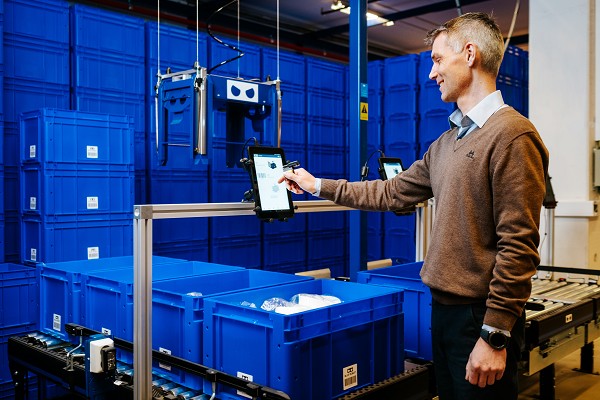Automation becomes a realistic alternative for SMBs in 2022!
Never in the history of logistics has the demand for efficiency in operations, combined with the need for more optimal space utilisation, been higher. Businesses of all sizes are increasingly needing systems that can help to improve their warehouse processes, and fast.
Today, about 5% of the world’s warehouses have some level of automation and that the trend is towards increased usage of automation and robotics*. The boom in shopping through various online channels over the last few years has taken many businesses by surprise. This is greatly exacerbated by the necessary shift in consumer behaviour from brick and mortar to ecommerce during the pandemic. Existing manual warehouse processes have simply been unable to handle the rapid increase in volume, both of orders for picking and for incoming goods that must be registered in stock.
Dealing with the situation
Most will agree that this is more of an issue to solve caused by a positive change, rather than a problem. The short-term solution for many warehouse managers has been to increase staffing and introduce more and longer shifts. Manual routines and complex processes make it time consuming to onboard new employees, increasing the cost and the risk of human errors during goods handling.
Automation is a tried and tested way to replace complex existing manual processes with a solution that is more accurate, effective and scalable, while also increasing the human employee efficiency exponentially.
Warehouse Management Systems just became a commodity
Historically, advanced systems that support warehouse processes have been adopted by the major players first, due usually to the large upfront investment required. In many cases these systems were out of reach for a great number of businesses that fall into the small and medium size category.
It’s only in recent years that some of those systems have reached a maturity level of both cost and quality that it makes sense for SMBs to begin to invest. One example of this is Warehouse Management Systems. Earlier, these systems were expensive to install and even more expensive to integrate. Now, it is finally possible for even small business to invest in and set up a high-quality WMS within days or even hours. Integrations are in many cases provided as plug-and-play services that can easily be installed by the users themselves.
2022 – The year it all changes for AS/RS
The same change is now happening to automation of physical processes such as picking, packing and sorting of items. There are still not many systems on the market that are within reach of the majority of SMBs, however this is rapidly changing.
A prediction made by many experts within logistics is that 2022 will be the year where the same journey starts for automated storage and retrieval systems (AS/RS). They will go from something that is only affordable for the large players, to something that is a commodity for all with the need to store and retrieve products.
Is your business ready for that shift?
*logisticsIQ “Warehouse Automation: Rise of Warehouse Robots”

